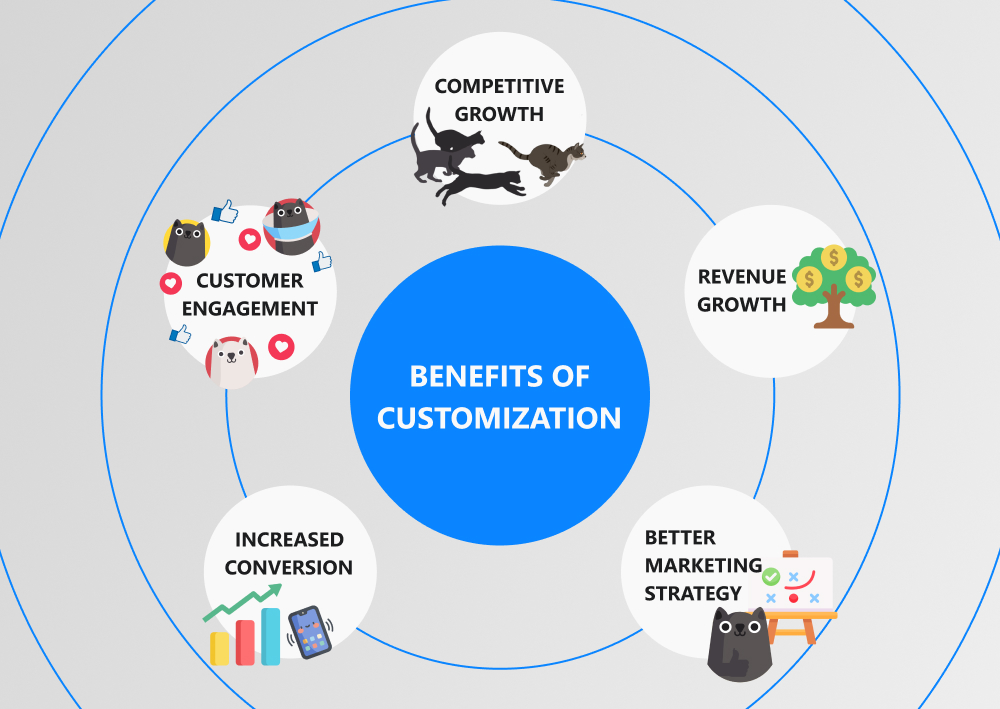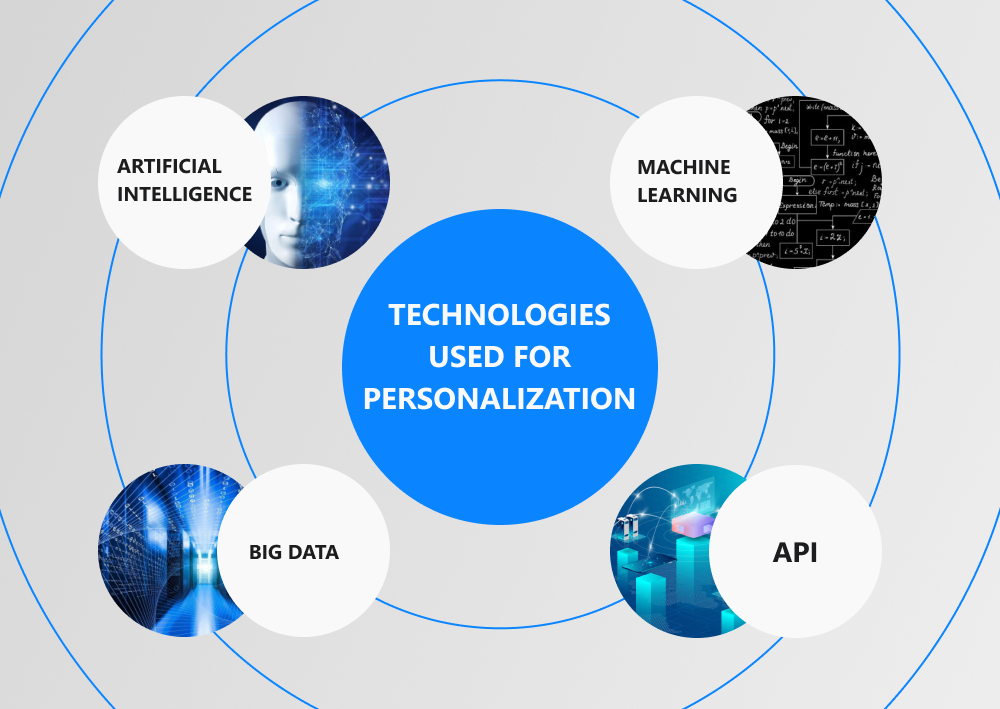Today, banks and credit unions seek to follow market requirements and customer expectations. That's why they are actively implementing new technology solutions and digitizing their products and services, making them accessible to all categories of clients. Users appreciate the efficiency and mobility provided by technological features; however, 72% of people need a personalized customer experience. Therefore, many financial institutions are now considering banking personalization and customization as a way to improve customer satisfaction and gain a competitive advantage.
In this article, we'll talk about personalized banking services and how they help banks achieve significant performance gains.
written by:
Alexander Arabey
Director of Business Development, Qulix Systems
Today, banks and credit unions seek to follow market requirements and customer expectations. That's why they are actively implementing new technology solutions and digitizing their products and services, making them accessible to all categories of clients. Users appreciate the efficiency and mobility provided by technological features; however, 72% of people need a personalized customer experience. Therefore, many financial institutions are now considering banking personalization and customization as a way to improve customer satisfaction and gain a competitive advantage. In this article, we'll talk about personalized banking services and how they help banks achieve significant performance gains.
Contents
Personalization in Banking: How to Understand Customer Needs
Personalization is a strategy aimed at tailoring banking products and services to users' needs and tasks. This mechanism allows the financial services industry to build trust in a relationship with potential and existing customers. How does it work? Banks leverage customer data in order to analyze customer's behavior, develop special offerings, and distribute them through the right physical and digital channels.
If a bank offers a client a useful and required product and service that will meet his or her financial needs, there are high chances that the client will accept the offering. When customers are satisfied with the financial services, they continue to cooperate with the financial institutions and recommend them to their friends, relatives, and colleagues. As a result, banks get more clients, boost customer loyalty, and increase their revenues.
How Personalization Initiatives Benefit the Banking Industry
Leading financial institutions have already taken advantage provided by the personalization strategy. Let's see how banks use it to stay ahead of their competitors.
Improved Customer Engagement
Customers expect financial institutions to take into account their interests and needs when developing the products and services. Imagine that your client Bob took an interest in trading. Your task is to attract Bob by providing him with relevant information, such as videos or books about trading. Then you can give him personalized advice or send an individual offer that will cover Bob's demands. In the future, he will recommend this product to his friends and use other services because he trusts you and is sure that you are able to meet all his needs.
Increased Conversion Rates
Create customized offers and send them to your clients through the proper digital and human channels to motivate them to visit your website or application. This strategy help banks increase conversion rates. For example, B2C customers of American Express UK received personalized videos every month. The bank gave useful tips on account management and shared information about rewards. This measure helped it triple the conversion rate.
Revenue Growth
According to McKinsey, financial companies can boost their revenues by 15% thanks to personalized banking offerings. Analyzing customer behavior and preferences helps banks find the most appropriate solutions for their clients. They can use tools like A/B testing that will allow banks to choose the best option. You will clearly understand how to segment customers and what product to show them.
Better Marketing Strategy
The above-mentioned research also found that personalization can increase the efficiency of your marketing efforts by 10-30%. When you know what products will be more attractive to your customers, you will understand how to advertise them, what channels to choose, and how to develop the perfect marketing strategy. Your consumers will be glad when they receive a letter or video with interesting and useful content developed for them.
Competitive Growth
Personalization in banking is an instrument that allows banks and credit unions to clearly understand what products and services will be popular among customers, what features they want to see in apps and other solutions, how they should look, and so on. Customer insights will help financial organizations create effective solutions that will be bought, downloaded, and installed by consumers. By launching high-quality and required products and services to the market, banks will win the competition.
Enabling Personalization: Technologies to Use
Banks have access to customer data that include full names, date of birth, family members, account balance, transaction history, and much more. For example, transactions can tell you about the hobbies, lifestyle, preferences, possibilities, and wishes of your clients. The task of the bank is to collect and analyze this data in order to create a special offer. For example, you track the transaction history and notice that a customer is repairing a car. So, you can offer him or her a car loan on favorable terms or develop another beneficial offering.
Let's see what tools can be used to deliver personalization in banking.
Artificial Intelligence
Artificial intelligence analyzes customer behavior patterns and compares them to large amounts of data to determine a customer's unique needs and preferences. This allows you to quickly select the best ideas, retain existing users, and find potential customers. For example, Bank of America uses an AI-based chatbot that sends clients notifications about account balances and provides helpful tips on loans, savings, and much more. This customer-centric approach allows users to improve their financial literacy and make informed decisions.
Machine Learning
Many banks use machine learning algorithms to determine what financial services and products are in demand. Based on this information, the financial institution will be able to create personalized customer experiences by targeting clients and providing them with relevant content. According to BCG, personalization in banking is capable of boosting revenues by up to $300 million.
Big Data
The financial services industry uses advanced analytics for a variety of tasks, such as fighting fraud, monitoring compliance with laws and regulations, risk management, optimizing internal processes, and managing customer relationships. Forrester revealed that Big Data collection and analytics is the main tool applied by 36% of marketers to study consumer behavior and develop marketing strategies.
APIs
An API, or an Application Programming Interface, is a protocol that allows different applications to communicate with each other. Simply put, a financial institution can connect to any program through the API in order to evaluate the available data. Banks are currently actively cooperating with fintech companies and startups that create personalized financial services.
Banks have huge amounts of unstructured data about their customers. Unlike startups, they don't have access to the latest technology services. They must invest time and resources in developing solutions that will bring order to this data. Thanks to open APIs and the cooperation of banks with fintech businesses, personalized financial applications and digital banking will appear.
Personalization Issues
Financial institutions understand that they need to personalize their products and services in order to anticipate the desires of customers. Nevertheless, 75% of banks face challenges in developing their personalization strategies. As a result, consumers receive standard offers and conventional newsletters, which do not contribute to building deep relationships with clients.
Also, the development of a customized and individualized solution requires internal resources, time, a professional team, experience, and knowledge. Banks have access to a huge customer base and have customer trust, security, and compliance. At the same time, they are not able to quickly adapt to changes, they are not flexible, and they lack the knowledge to create technological solutions.
Therefore, it is important for financial institutions to find a reliable partner or development company that will help them properly collect and process customer data in order to create personalized offers. In addition, an experienced developer will be able to customize your digital banking or application, making it more convenient and efficient for users.
Another issue involves the collection, processing, and use of personal data. Users want to be sure that banks will keep confidential information secure and only leverage it to create personalized offers. By the way, people can sleep with a calm mind because there are regulations (e.g., GDPR) that oblige financial organizations to protect private information.
Bottom Line
Personalization in banking is one of the trends aimed at improving customer experience by anticipating users' needs and solving their problems. Banks apply artificial intelligence, predictive analytics, and machine learning to provide personalized products and services. This combination allows them to find out what content and communication channels their consumers prefer to build effective solutions.
If you need additional information about banking personalization and its advantages, we will be happy to answer all your questions. For more details, please visit our website or get in touch with our support team.

Contacts
Feel free to get in touch with us! Use this contact form for an ASAP response.
Call us at +44 151 528 8015
E-mail us at request@qulix.com








